This is my code...
import pygame as pyg
import sys
#Game constants
SCREENSIZE = (1400, 800)
running = True
disp = pyg.display.set_mode(SCREENSIZE)
tilemap = [
pyg.image.load("Grass.png").convert()
]
for y in range(8):
for x in range(8):
disp.blit(tilemap[0], (300+x*32 - y*32, 200+x*16 + y*16))
while running:
for event in pyg.event.get():
if event.type == pyg.QUIT:
sys.exit()
pyg.display.update()
This is the result on my computer. I am using Windows 11 with a AMD Rysen 7 5700G with integrated graphics...
This is the asset image I am using to build the isometric world
Why am I getting all those black triangles in my image?

